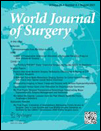Extremity Tourniquet Training at High Seas
Abstract
Background
Future navy officers require unique training for emergency medical response in the isolated maritime environment. The authors issued a workshop on extremity bleeding control, using four different commercial extremity tourniquets onboard a training sail ship. The purposes were to assess participants' perceptions of this educational experience and evaluate self-application simplicity while navigating on high seas.
Methods
A descriptive observational study was conducted as part of a workshop issued to volunteer training officers. A post-workshop survey collected their perceptions about the workshops' content usefulness and adequacy, tourniquet safety, self-application simplicity, and device preference. Tourniquet preference was measured by frequency count while the rest of the studied variables on a one-to-ten Likert scale. Frequencies and percentages were calculated for the studied variables, and application simplicity means compared using the ANOVA test (p < 0.05).
Results
Fifty-one Spanish training naval officers, aged 20 or 21, perceived high sea workshop content's usefulness, adequacy, and safety level at 8.6/10, 8.7/10, and 7.5/10, respectively. As for application simplicity, CAT and SAM-XT were rated equally with a mean of 8.5, followed by SWAT (7.9) and RATS (6.9), this one statistically different from the rest (p < 0.01). Windlass types were preferred by 94%.
Conclusions
The training sail ship's extremity bleeding control workshop was perceived as useful and its content adequate by the participating midshipmen. Windlass types were regarded as easier to apply than elastic counterparts. They were also preferred by nine out of every ten participants.




